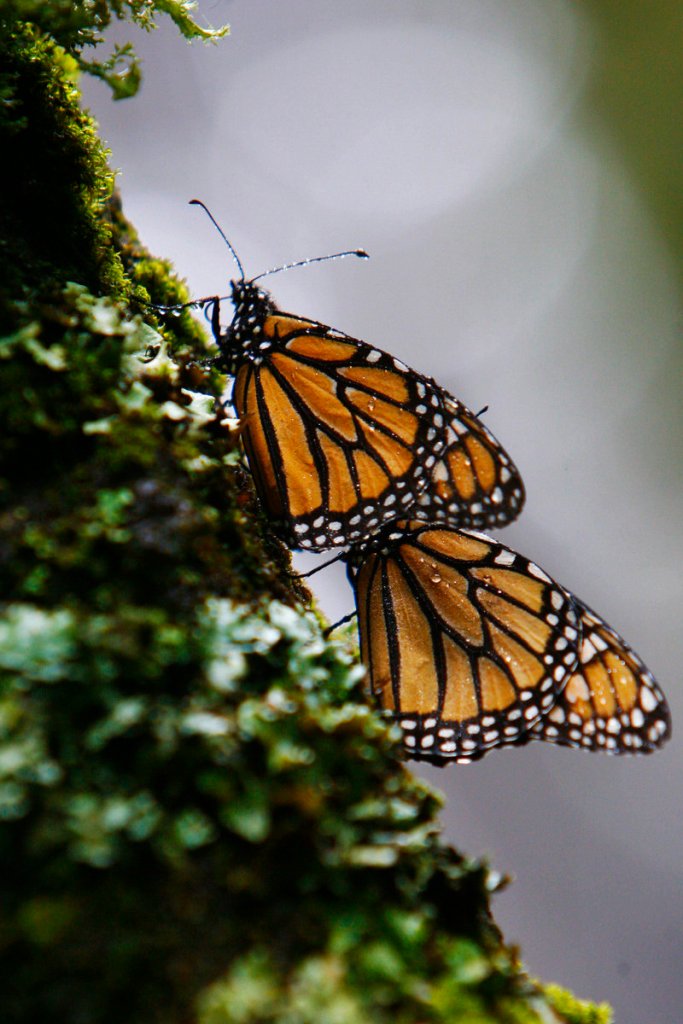MEXICO CITY — The number of monarch butterflies migrating from Canada and the United States to Mexico has increased this year, a hopeful sign following a worrying 75 percent drop in their numbers last year, experts reported Monday.
The total amount of forest covered by the colonies – millions of orange-and-black butterflies that hang in clumps from the boughs of fir trees – more than doubled from last year’s historic low.
But concerns persist about the monarchs’ long-term survival, because their numbers remain well below average.
This winter, there are 9.9 acres of colonies, more than double the 4.7 acres last year, the lowest level since comparable record-keeping began in 1993.
“These figures are encouraging, compared to last year, because they show a trend toward recovery,” said Omar Vidal, director of the conservation group World Wildlife Fund Mexico, which sponsored the study along with the government Commission on Natural Protected Areas and the cell phone carrier Telcel.
Despite the rebound experienced by this mysterious scientific phenomenon, historically a huge tourist draw, the latest numbers are well below the almost 20 acres covered in the 2008-09 winter season and the record high of 45 acres in 1996-97.
“Fluctuations in insect populations are normal in nature,” the study’s sponsors said in a statement.
“With regard to the monarch butterfly, these fluctuations could be due mainly to climatic conditions,” including especially cold or dry years in the United States and Canada, where the butterflies that make the trip are born.
But experts said natural variation doesn’t fully account for a long-term decline in average numbers.
The butterfly population also has been hurt by deforestation of the mountaintop pine forests in Mexico’s western Michoacan state that serve as “blankets” to protect the insects against winter rain and cold.
The WWF, private companies, international groups and Mexican state and federal governments have been battling deforestation over the past decade. They sent police to raid illegal sawmills and started alternative income projects, such as tree nurseries, for the farm communities that own land in federally protected reserves.
Lincoln Brower, an expert on monarch butterflies and zoology professor at the University of Florida, said this year’s recovery is good news, but added that each time the butterflies “recover,” they slip to lower and lower numbers.
“What is ominous is that all of the last seven years have been below average,” he said.
Brower pointed to several possibilities for the decline: climate changes, deforestation, and the existence of genetically modified crops and pesticides, which crowd out the milkweed plants where monarchs lay their eggs.
Send questions/comments to the editors.



Success. Please wait for the page to reload. If the page does not reload within 5 seconds, please refresh the page.
Enter your email and password to access comments.
Hi, to comment on stories you must . This profile is in addition to your subscription and website login.
Already have a commenting profile? .
Invalid username/password.
Please check your email to confirm and complete your registration.
Only subscribers are eligible to post comments. Please subscribe or login first for digital access. Here’s why.
Use the form below to reset your password. When you've submitted your account email, we will send an email with a reset code.